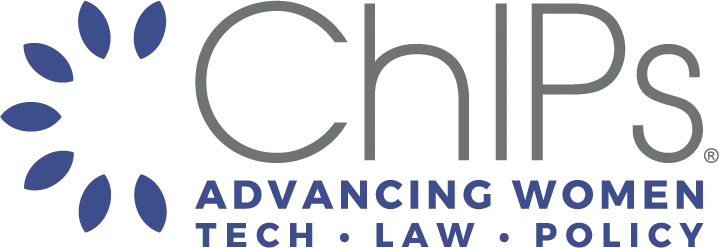
The Hot Topics in IP Law panel moderated by Dale Cendali, and featuring Yimeng Dou, Christen Dubois, Diana Torres, and Kimberly Schmitt, was substance laden. The conversation began discussing intellectual property (IP) litigation, particularly disputes driven by non-practicing entities (NPEs) or patent trolls. Data from the last decade charts a rise in costs and a doubling of district court cases driven by NPEs, particularly in the tech industry where about 88% of court cases are brought by NPEs.
A powerful tool defendants now have to respond to lawsuits initiated by NPEs is a new court disclosure requirement of the identity of any litigation funder. For example, Judge Connolly of the District of Delaware has issued a standing order1 requiring that the identity, address, and place of formation of any third-party litigation funders must be disclosed. Patent litigation defendants may seek additional discovery into the funding arrangement if they can show good cause, including that a funder has authority to make settlement decisions.
The panel then covered copyright litigation, which is particularly exciting right now in light of the impact of generative artificial intelligence (AI). Lawsuits are rising by creators claiming copyright infringement by AI training models or that the output of AI models infringe their work. Conversely, defendants in such claims are asserting that works produced by AI are transformational fair use. This specific issue is being considered in a class action2 before Judge Orrick who granted in part the defendant’s motion to dismiss, but maintained a direct copyright infringement claim, which has yet to be adjudicated.
IP litigation is also expected to tackle the issue of authorship or ownership of products of AI. For example, how much human interaction constitutes human authorship or inventorship for creative works or patents, respectively? How large of a role may AI play in creation of a new work or invention to be considered a work of a human and therefore protectable? These are issues that will continue to be litigated to provide a series of nuanced rulings that will likely define ownership of AI-generated products in this evolving legal landscape.
The panelists also considered the reinstatement of the presumption of irreparable harm by the Trademark Modernization Act and its impact on litigation. To overcome this presumption, the courts have followed different approaches. The Third Circuit Court of Appeals (COA) developed the easy approach with a pesticide case3, wherein after weighing the factors the court found it was the plaintiff’s burden to show likelihood of irreparable harm. In contrast, the Southern District Court of New York4 considered the legislative history and content of the Lanham Act, and held this burden should remain with the defendant. This issue is outstanding, and it is not certain where the Ninth Circuit COA will land either.
Jack Daniel’s case
Of course, the First Amendment issue in the Jack Daniel parody case5 remains important as it has renewed focus on the interplay between trademarks and freedom of speech. The Jack Daniel decision5 has greater implications on what was considered good law by Rogers v. Grimaldi6, which applied to everything that had artistic expression. Now, in light of the Jack Daniel case5, courts are questioning if the Rogers holding is still good law.
Importantly, Supreme Court Justice Sotomoyer’s opinion in the Jack Daniel case5 cautioned against giving uncritical weight to trademark confusion surveys in context of First Amendment considerations. This opinion will likely give plaintiffs a rationale as to why they do not produce surveys, while defendants can argue that any such surveys should not be given their historical weight. Notwithstanding, panelists expected that many courts will continue to give weight to surveys and some may even align with the Fourth Circuit COA whose opinion is that strong survey evidence standing alone can be compelling to demonstrate actual confusion.
Panelists also cautioned trade secret holders to be diligent in defining and protecting their assets in light of recent court holdings. Specifically, panelists highlighted one case in which the trade secret was not definite enough to go to jury trial. Another trade secret case7 was litigated to jury trial, but the Ohio district court judge found that the trade secret was insufficiently definite to support the jury’s findings. Plaintiffs were encouraged to consider what secrets could be stolen, identified and/or defined, and what evidence can be provided regarding its identity, as well as protection mechanisms. Defendants were encouraged to ask for a specific definition of trade secret that could be understood by a court. It was also noted that parties should clearly define material that is protected by trade secret and patent and ensure there is no improper disclosure of trade secret information in patents that will be published.
Panelists concluded on the hot topic of diversity, equity, and inclusion in our legal profession where encouragingly 50% of law students are women. However, in our AmLaw 100 firms, only 24.3% of equity partners are women and only 4.1% are women of color. Moreover, only 1.7% of U.S. registered patent attorneys are diverse women. Considering these dire statistics, panelists conveyed a heartfelt request to ChIPs attendees to renew their focused efforts on helping other women thrive – as a moral imperative – recognizing we are stronger together and terribly needed in this profession. Warm receipt of the sentiment and substantive material was appreciated by all.
Angela B. Freeman is a partner at Barnes & Thornburg LLP and host of IBJ’s The Freedom Forum.
- https://www.ded.uscourts.gov/sites/ded/files/Standing%20Order%20Regarding%20Third-Party%20Litigation%20Funding.pdf.
- Sarah Andersen, et al., v. Stability AI LTD, et al., 3:32-cv-00201 (N.D. Cal. Jan. 13, 2023).
- Nichino America, Inc. v. Valent U.S.A., LLC, Case No. 21-1850 (3rd Cir. Aug. 12, 2022).
- Young v. James, No. 1:2020cv08252 – Document 9 (S.D.N.Y. 2020).
- Jack Daniel’s Properties, Inc. v. VIP Products LLC, 143 S. Ct. 1578 (2023).
- Rogers v. Grimaldi, 875 2d994 (2d Cir. 1989).
- Coda Dev. s.r.o. v. Goodyear Tire & Rubber Co., No. 15-cv-1572 (N.D. Ohio Mar. 31, 2023).
